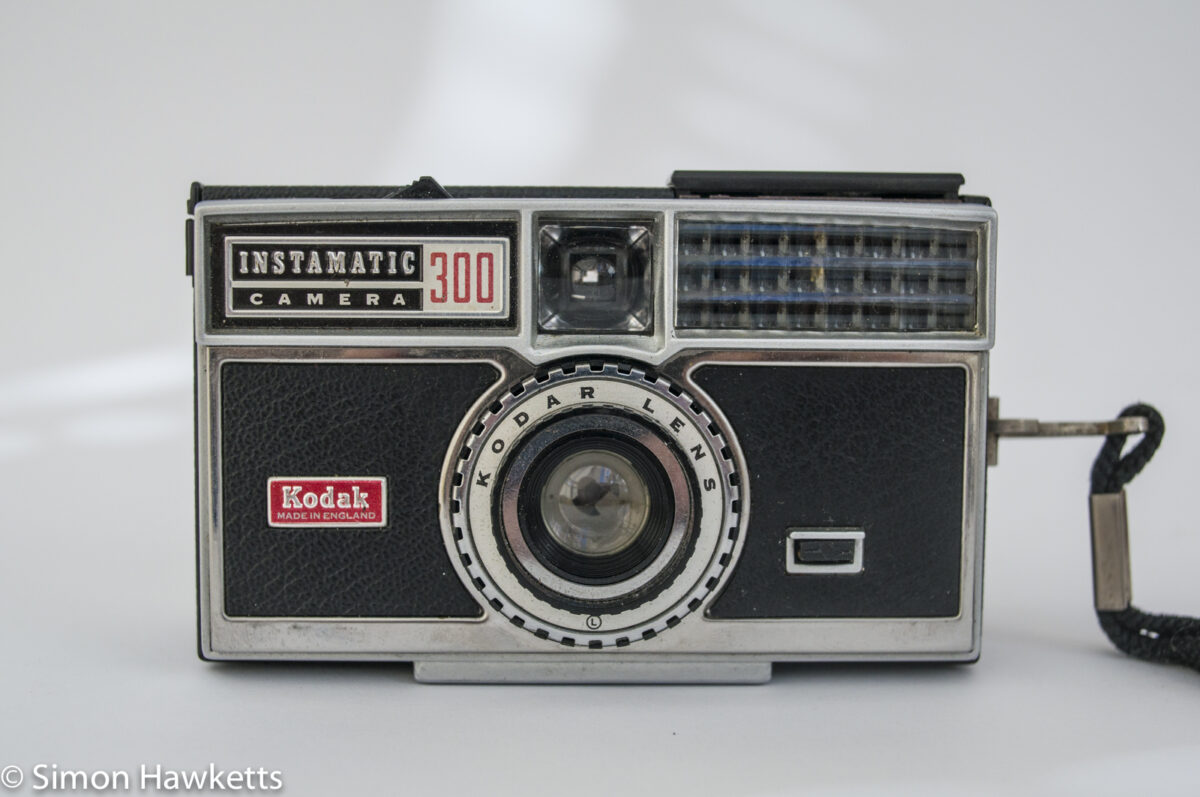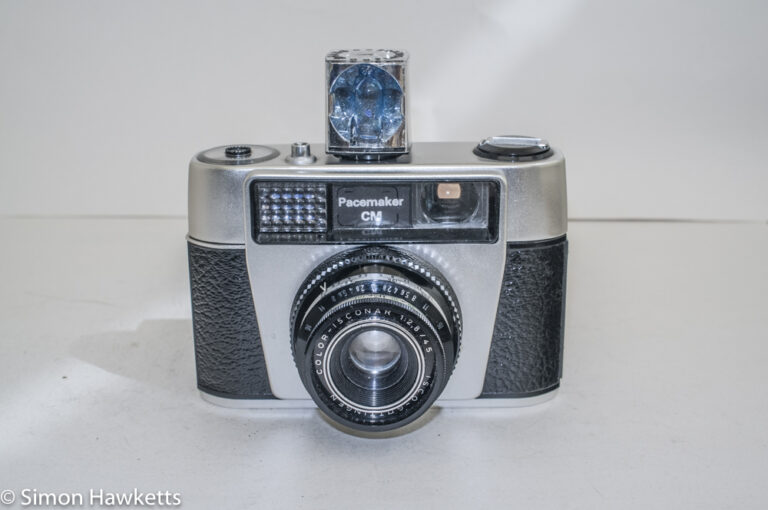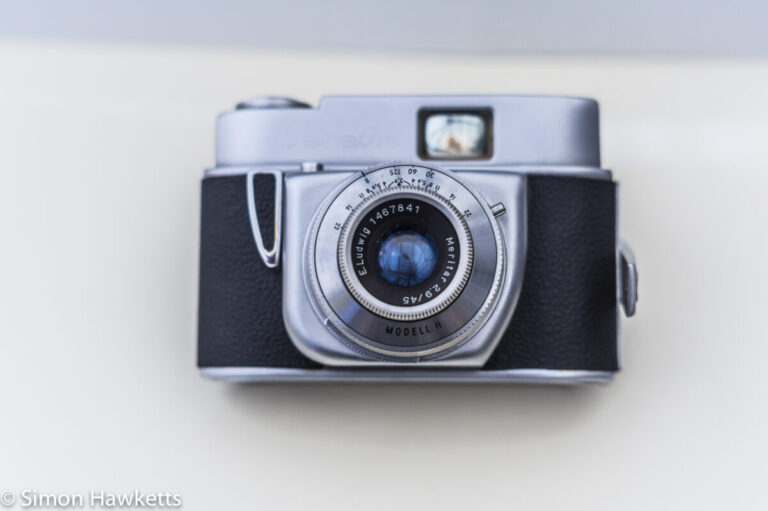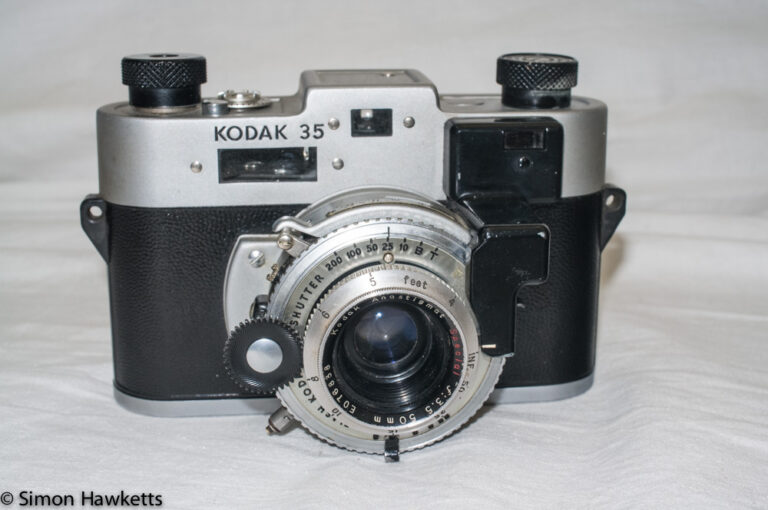Kodak Instamatic 300 camera
This Kodak Instamatic 300 is another camera I picked up in a Loughborough charity shop last weekend – this one for the princely sum of £1-50.
I primarily bought it because I remember my Brother using one on family holidays in the 1960s. I remember him using the Instamatic as my Dad used his Boots Beirette and how we used to view the resulting colour slides when they returned from processing a week or so later.
Kodak Instamatic 300 Images
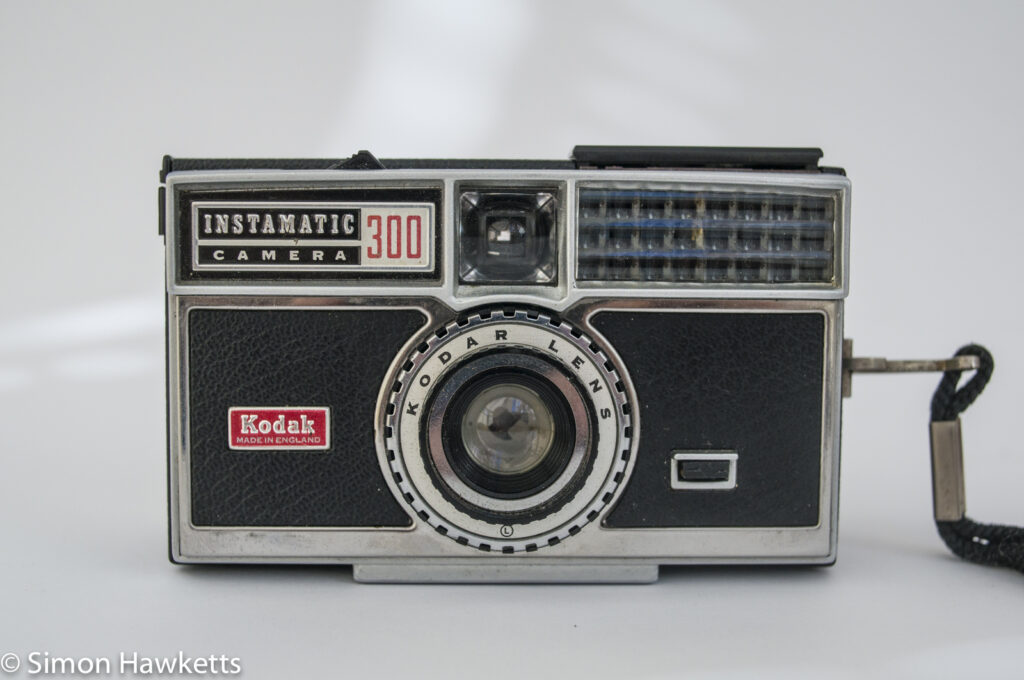

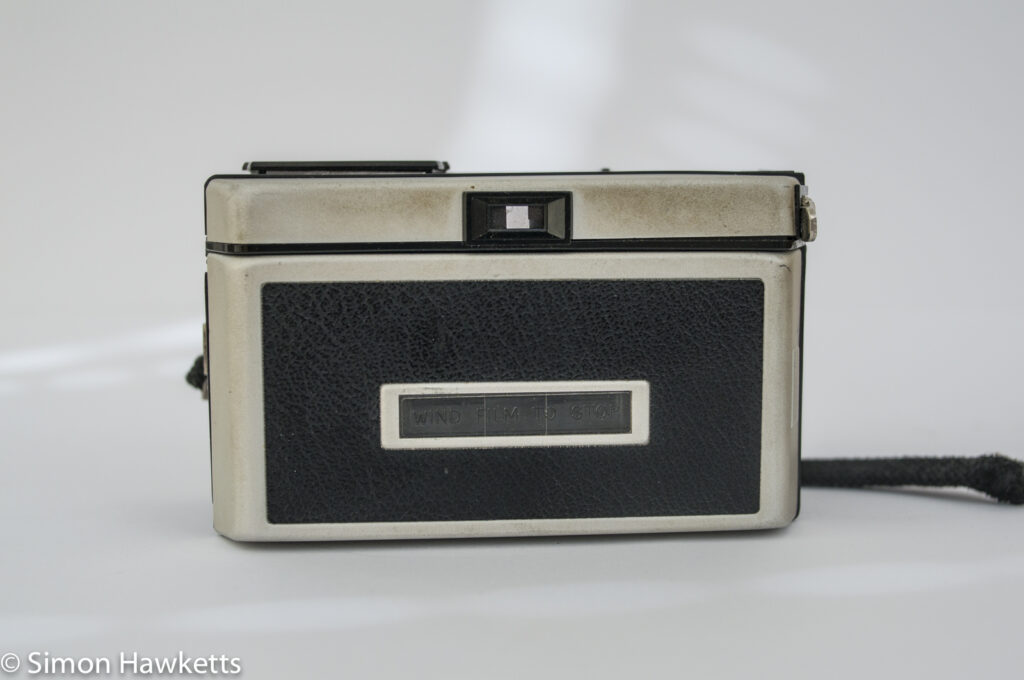
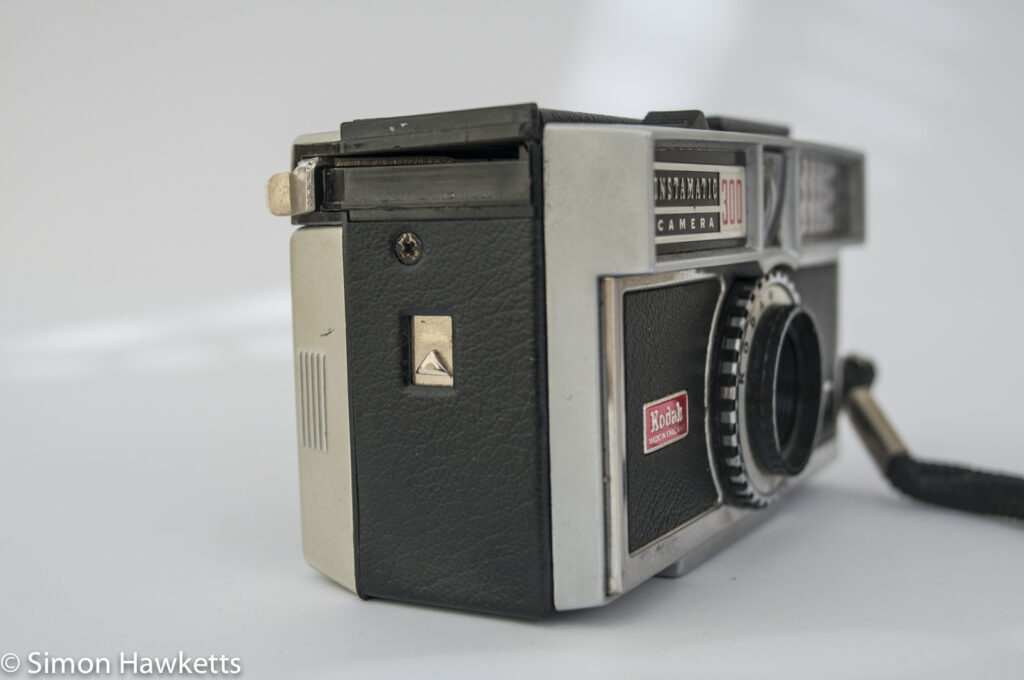
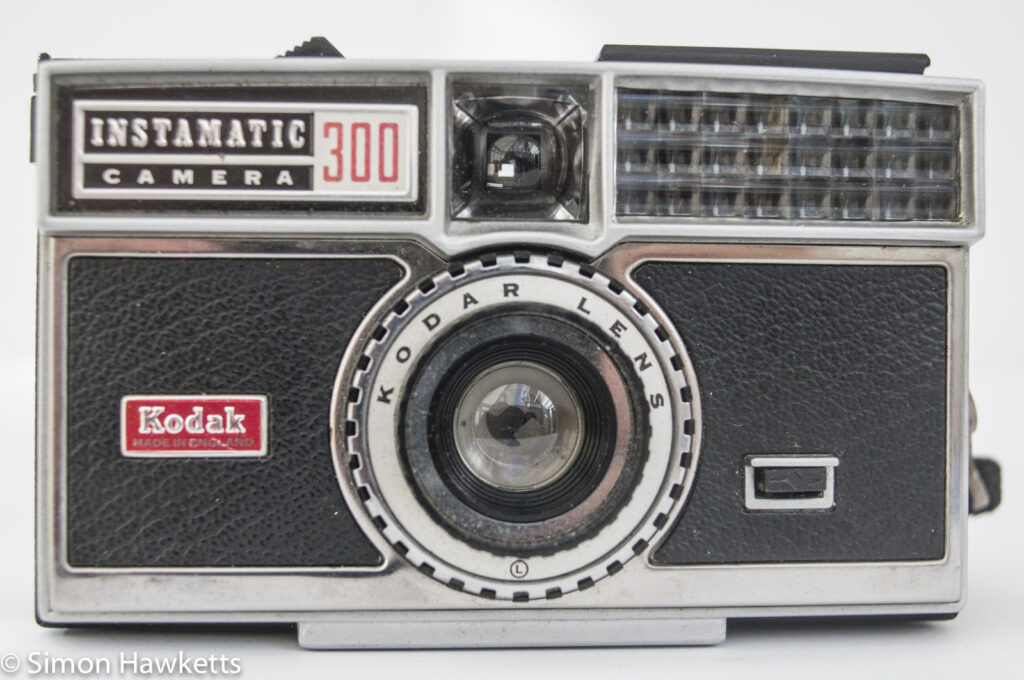
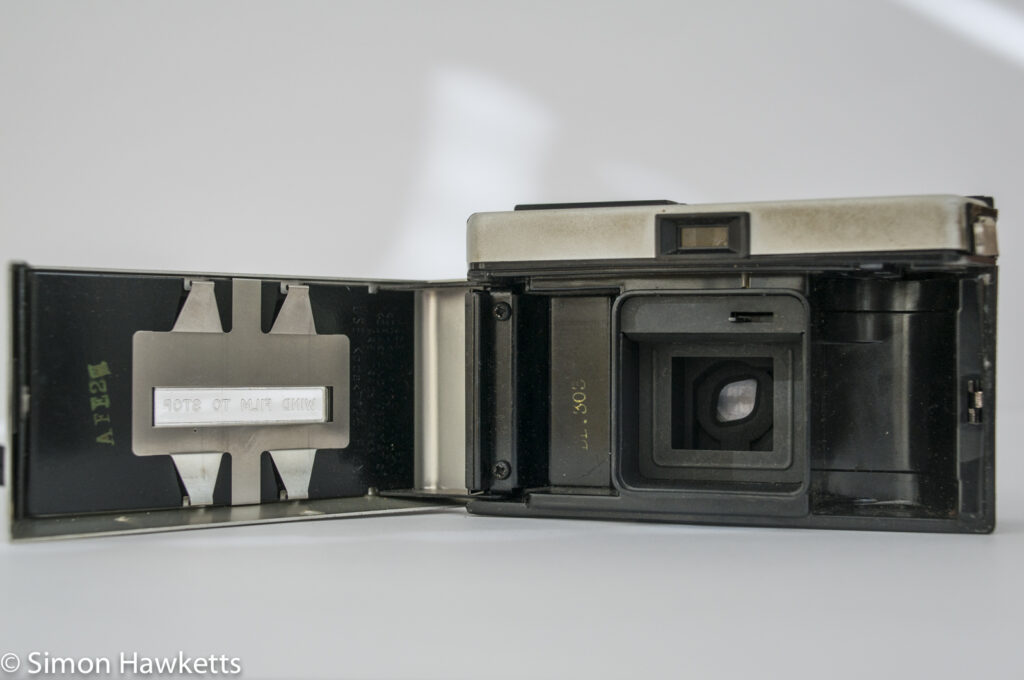
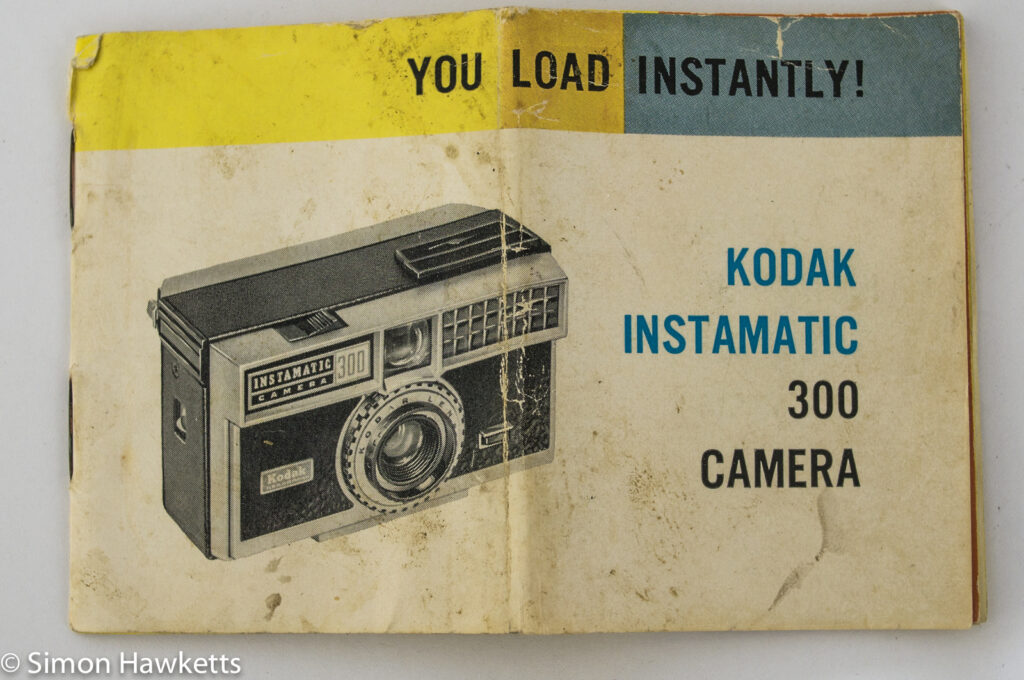
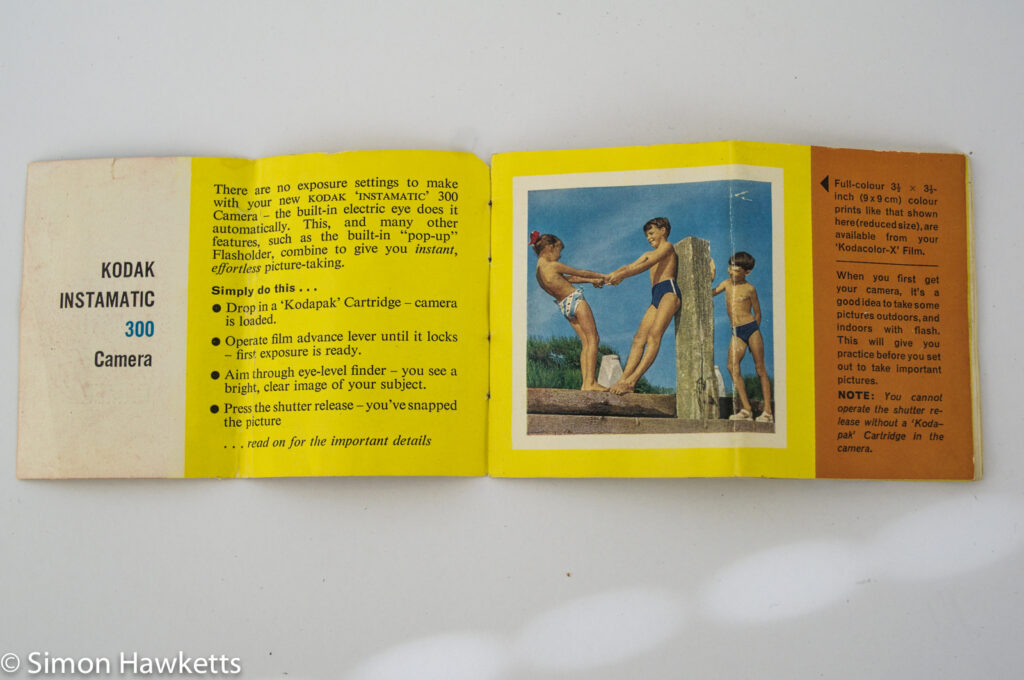
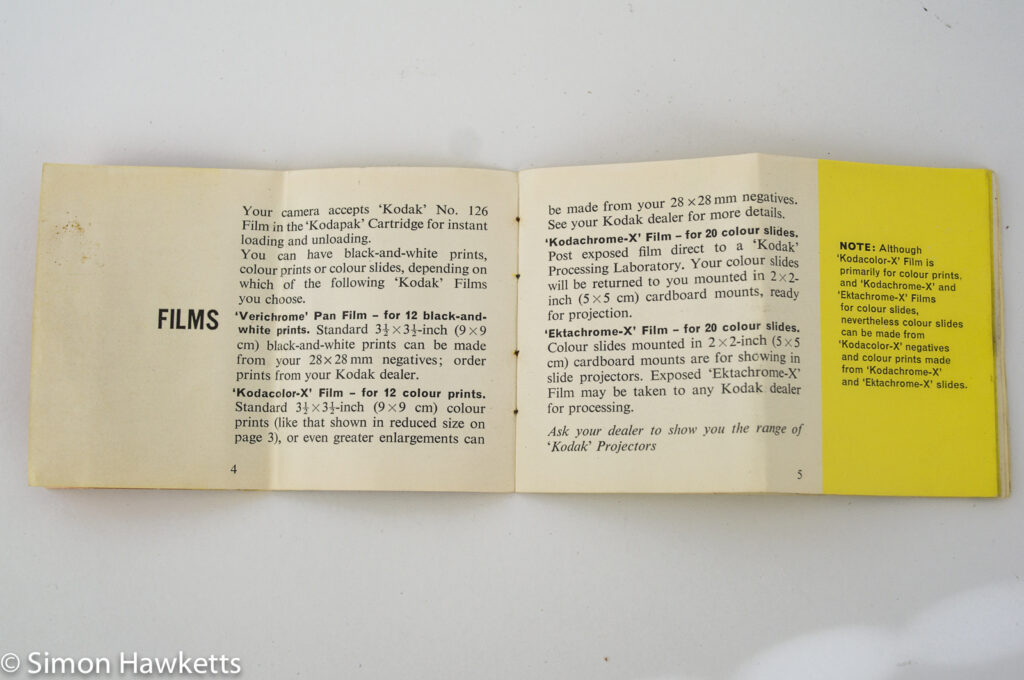
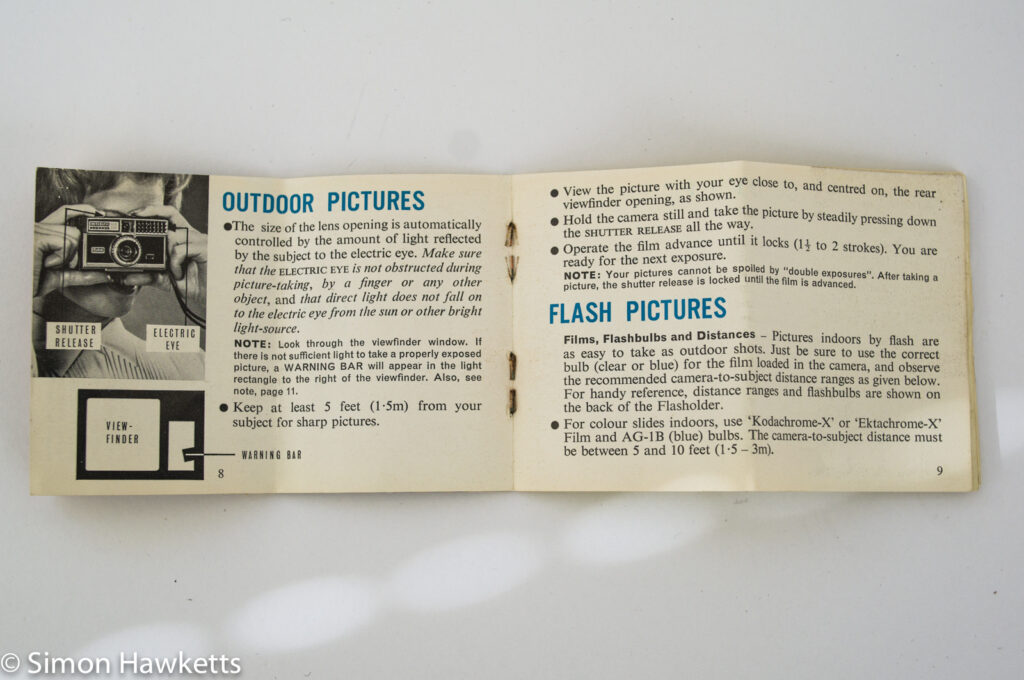
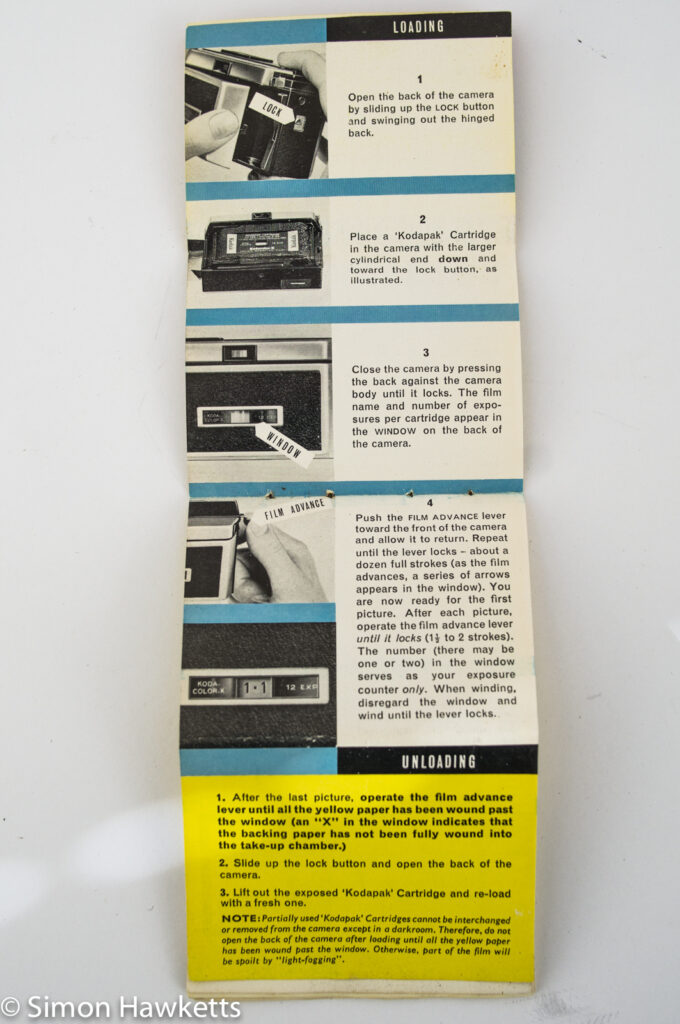
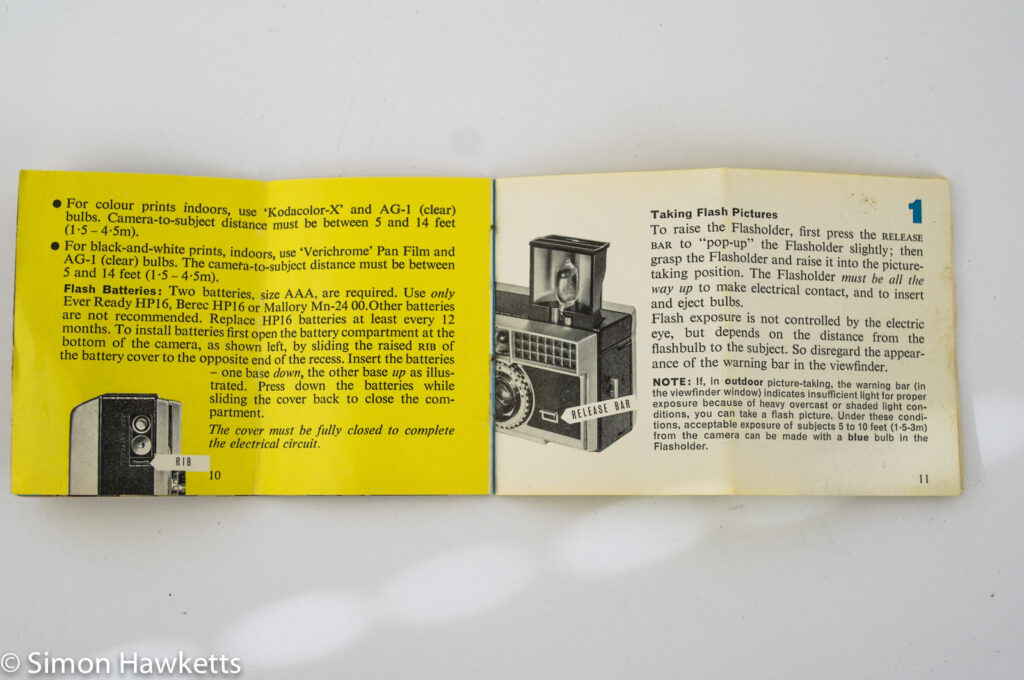
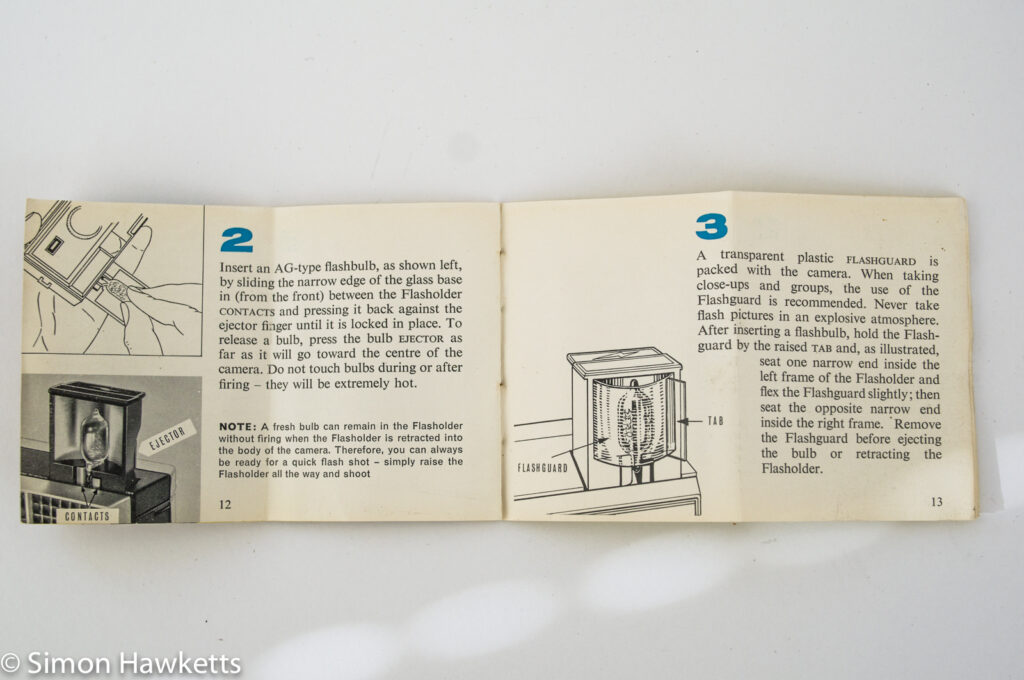
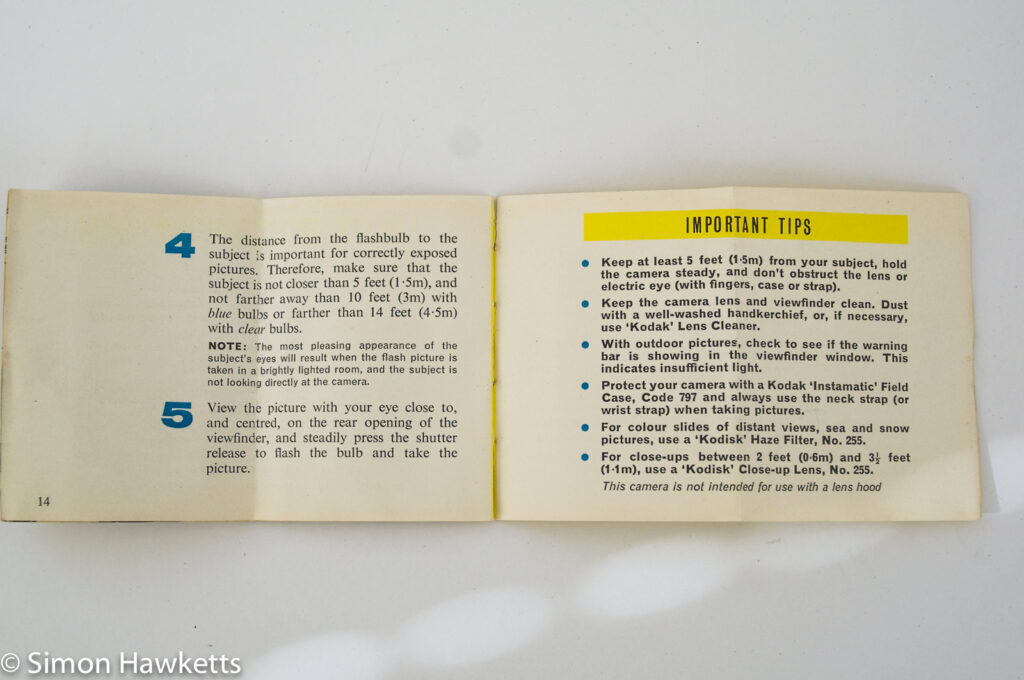
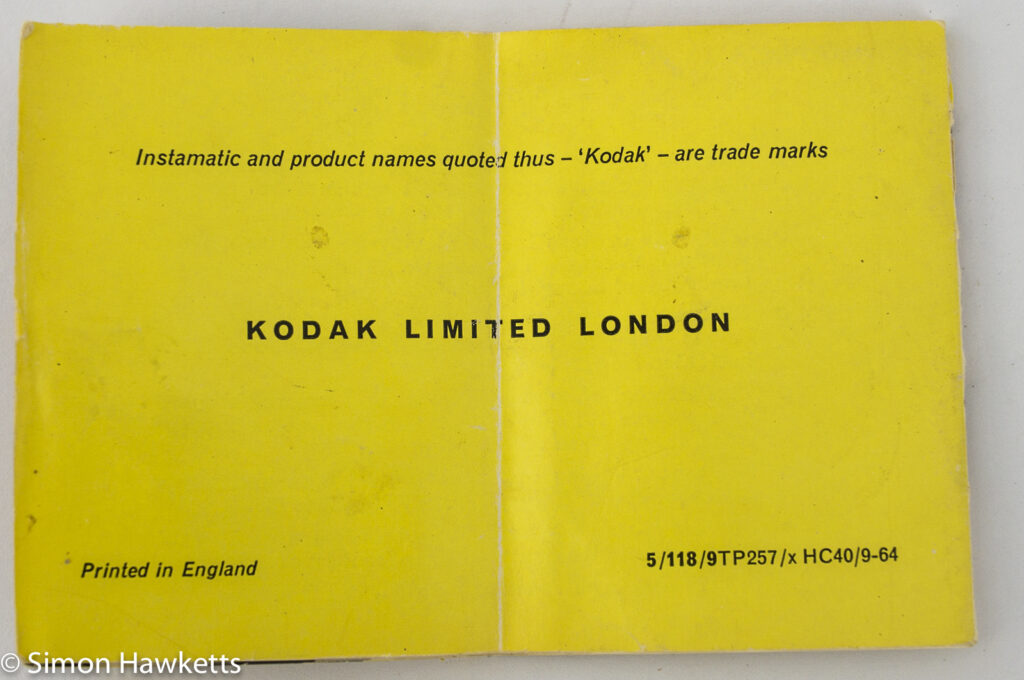
My brother’s Instamatic was a different model from this one however, it was quite slim and pocketable (at least that’s how I remember it – possibly time is playing tricks on me). This unit is quite large, probably because of the in-built bulb flash holder and the battery compartment in the bottom.
The example I bought seems if pretty good condition, although like all vintage cameras which have been used it needs a good clean. It came complete with handbook and leather case, although unfortunately there was no film inside.
Kodak Instamatic 300 description.
The Instamatic brand was created by Kodak as a simple camera for family snapshots. The whole concept was of a camera which needed no adjustment or control – you simply put a film in the back and fired away. They even developed a new film type for the camera, the 126 cartridge.
With this cartridge, there was no messing about feeding take up spools or rewinding at the end of the film. You just dropped the film into the film cartridge and once it had been fully exposed you took the cartridge out and sent it for development. The film inside the cartridge was the same size as 35 mm film, although the picture taken was square at 24 mm x 24 mm rather than the 35 mm film’s 36 mm x 24 mm.
The 300 model is slightly more sophisticated than most Instamatics because it had a light cell to measure the light level and used that information to drive the camera’s exposure system. There is also a meter needle which, if it becomes visible in the viewfinder, is used to warn the photographer that there isn’t enough light to take the picture and therefore to raise the built-in pop-up flash gun.
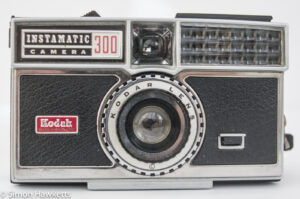
Other than the light cell, the rest of the camera is fairly simple. There is an automatic aperture which has a very odd shape of a fat H, (which must have given some interesting bokeh effects!) and a couple of shutter speeds.
There is a pop-up flash holder which took AG-1 or AG-1b bulbs driven by a couple of AAA batteries fitted in the camera. Interestingly, the handbook which came with the camera recommends fitting the supplied flash guard – a curved piece of transparent plastic – into the flash gun if you were taking pictures of a person or group of people. Presumably to protect them if the flash bulb exploded! I remember seeing flash bulbs which my Dad had used, and they certainly had expanded with the heat of the bulb going off.
So an interesting piece of camera history, although I doubt I’ll be able to try it out since 126 film cartridges are becoming increasingly difficult to find unless you want to pay ridiculous sums of money.
Kodak Instamatic 300 Specifications
- Kodak Instamatic 300 camera
- Instamatic 126 film cartridge
- Automatic exposure driven by Light cell
- Built in pop-up flash gun
- Exposure warning flag in viewfinder
- Ser No: 154362
- Made in England
- The Kodak instamatic group on Flickr
Discover more from Everything Vintage
Subscribe to get the latest posts sent to your email.

